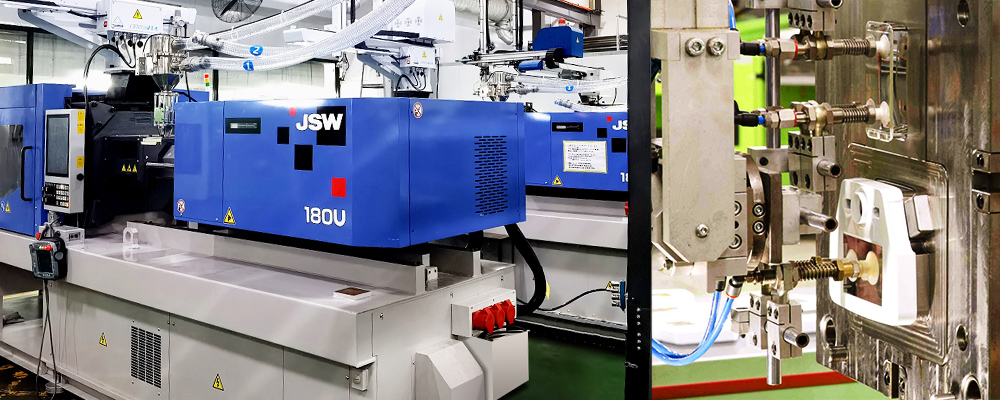Categories
New Blog
Molding: Common Production Processes In Small Appliance Manufacturing
These years, with the vigorous development of the small appliance market, people have noticed that small appliances are increasingly well-designed. Whether it's an air purifier, a vacuum cleaner, or a humidifier, these products are more visually appealing and perform better. In addition to advancements in industrial design, various manufacturing processes have played a significant role in this transformation. One essential manufacturing process in small appliance production is molding. The molding process greatly influences the appearance and structural components of appliances as it is commonly used to manufacture their casings and structural parts.
What are the common molding processes in small appliance manufacturing?
Injection molding is one of the most prevalent molding processes in small appliance production. It uses injection machines to inject molten plastic into molds, where it solidifies and takes on the desired shape and size upon cooling. Injection molding is suitable for manufacturing small appliance casings, accessories, and components, such as phone cases, TV remote control casings, and transparent water tanks for OEM home humidifiers.
Die casting: Die casting is utilized for manufacturing metal casings and parts in small appliances. This process involves injecting molten metal into molds and applying high pressure to fill and cool it, resulting in the desired shape and size. Die casting is commonly used to produce electric stove casings, coffee machine housings, and more.
Stamping: Stamping utilizes stamping machines and molds to process metal sheets through operations to manufacture casings and metal components for small appliances, such as punching, bending, and stretching. Stamping applies to producing cases for microwave ovens, fan grilles, and other parts.
Casting: Casting involves pouring molten metal or alloy into molds and obtaining the desired shape and size after cooling. In small appliance production, casting is often used to manufacture metal casings and parts with unique shapes or complex structures, such as coffee machine kettles and electric pressure cooker bodies.
Vacuum forming: Vacuum forming softens thermoplastic sheets by heating them on a heated mold and then uses vacuum pressure to draw the material onto the mold surface, taking the desired shape. Vacuum forming is suitable for producing small appliance casings with complex curves and details, such as vacuum cleaner casings.
Why is injection molding more widely applied in small appliance manufacturing?
Most people have likely noticed the increasing prevalence of plastic components in small appliance products. For instance, the casings of floor-standing HEPA air purifiers or the display panels of various smart kitchen appliances. These plastic products are often made using the injection molding process. Injection molding is widely applied for several reasons:
Cost-effectiveness: Injection molding is suitable for mass production, enabling efficient and cost-effective manufacturing. It can produce large quantities of cases and accessories within a short time, reducing manufacturing costs.
Design flexibility: Injection molding offers excellent design flexibility, allowing to produce cases and components with various shapes, structures, and intricate details. Manufacturers can flexibly design products according to their requirements, meeting both appearance and functional demands.
Material diversity: Injection molding can utilize a wide range of plastic materials. These materials possess characteristics such as lightweight, durability, and insulation. That makes them suitable for manufacturing cases and components with different needs. Additionally, these plastic materials can be enhanced through additives to meet specific product requirements.
High production efficiency: Injection molding processes are highly automated, with relatively simple production procedures that can be completed within short cycles. This enables small appliance manufacturing service providers, like OEM ultrasonic humidifier factories, to quickly meet market demands and promptly introduce new products or fulfill order requirements.
Consistent quality: Injection molding enables batch production, ensuring consistency in the dimensions and shapes of each casing and component, ensuring stable product quality. The automated control and monitoring systems in injection molding can promptly identify production issues, reducing the number of defective products and improving quality and consistency.
In conclusion, custom plastic injection molding offers significant advantages in cost-effectiveness, design flexibility, material selection, production efficiency, and quality consistency. Consequently, manufacturers frequently choose injection molding for producing cases and components in small appliances. This choice satisfies product requirements, including design aesthetics, precision, functionality, and cost-effectiveness.

Copyright © 2012-2026 Xiamen Atyou Health Technology Co., Ltd. All Rights Reserved.